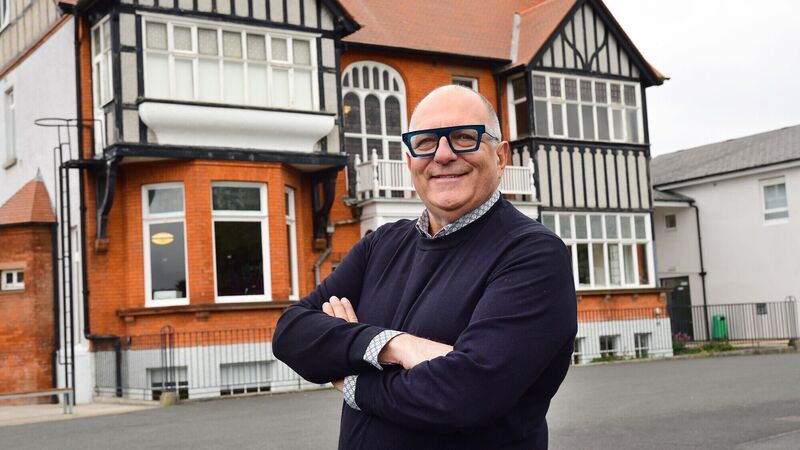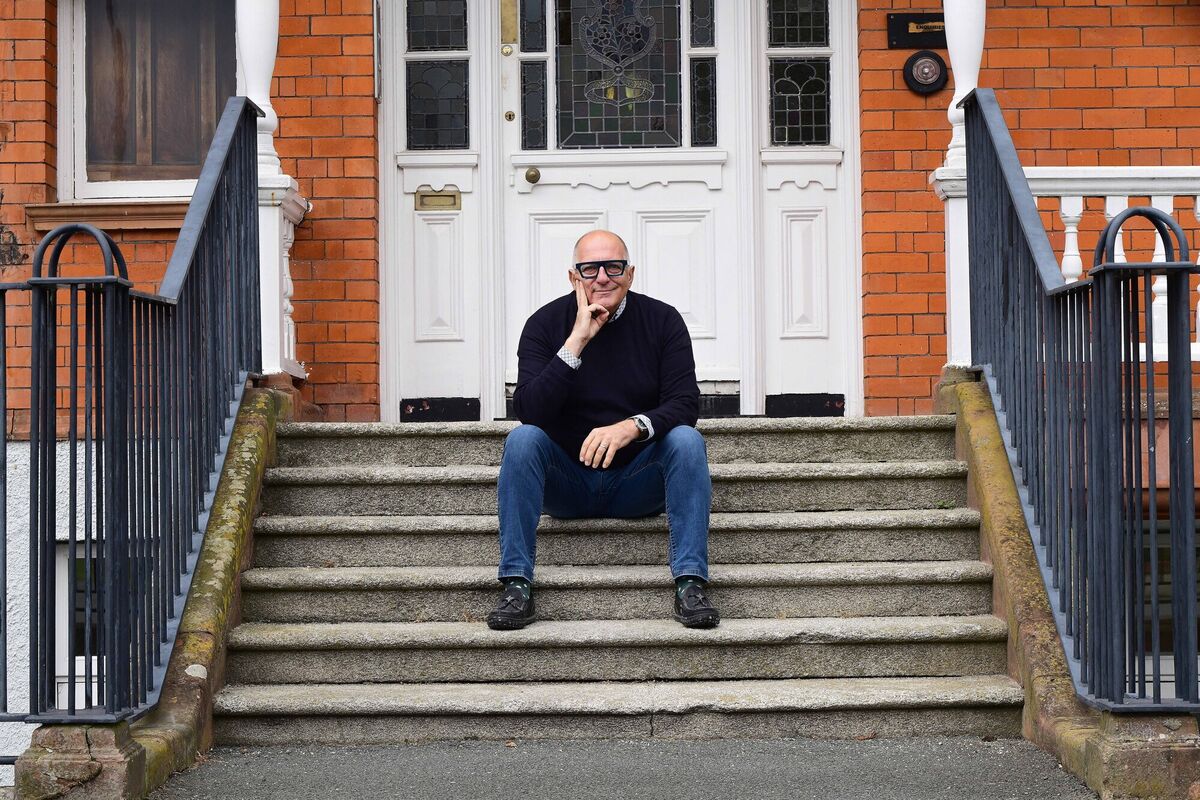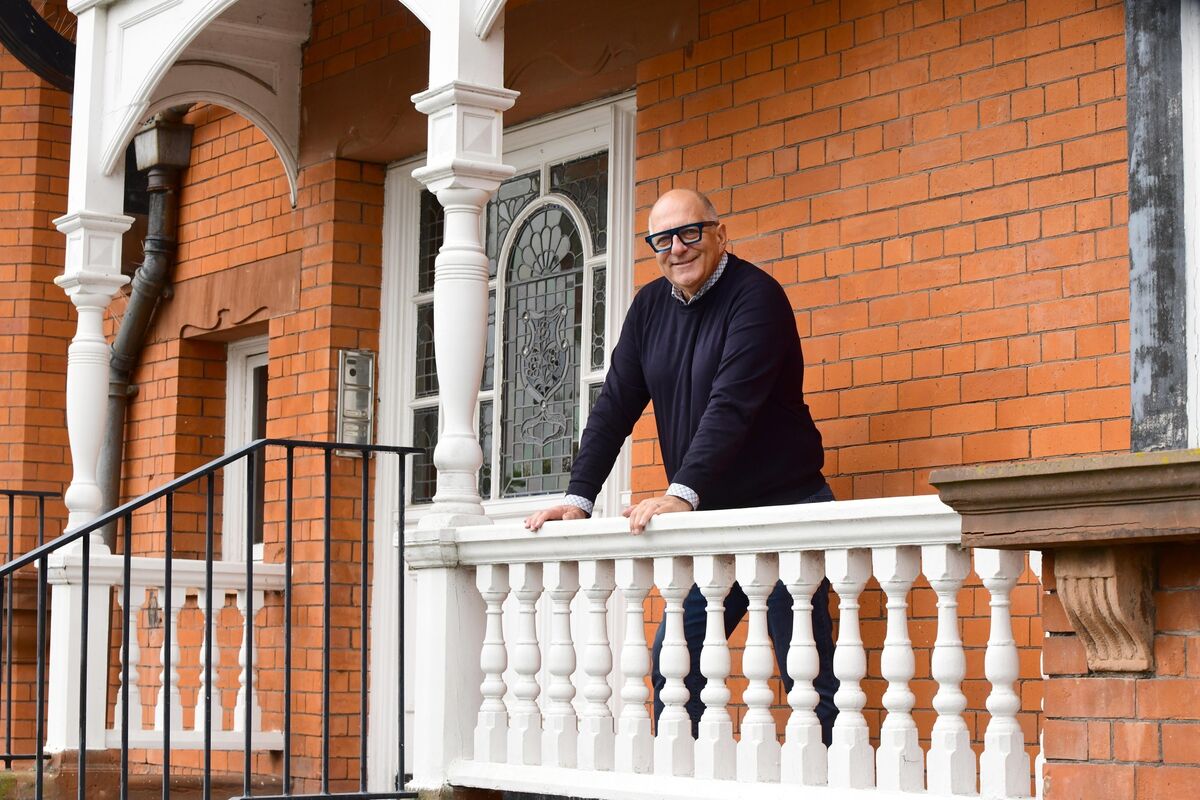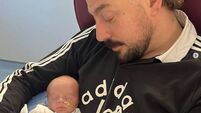Hugh Wallace: My dyslexia diagnosis gave me the confidence to say I’m gay

Hugh Wallace outside one of the original buildings at Sandford Park Secondary School where ha went to school. Photograph Moya Nolan
There were 23 boys in my class at Sandford Park School, Ranelagh, and I used to come 21st in everything.
I had huge spelling issues. For me, these things weren’t words or letters — they were shapes. I’d have to write a sentence I’d written wrong 100 times, which really didn’t do anything for me.
Nobody knew what it was, and then I was frustrated because it was like ‘poor Hugh is a bit thick’. That puts a dent on your whole way of thinking of yourself. You believe you’re thick.
My aunt would buy me dictionaries, but dictionaries are only good if you know what the first three or four letters of the word are.
I loved art and drawing and mathematics and chemistry — I loved everything, except I hated languages and I had a particular dislike for Irish.
It was April 1975. I had done my mock Leaving Cert — NG in Irish, D in pass English, whoever gave me that it was a sympathy vote — and my English teacher, Greg Collins, said ‘I think you’re dyslexic’.
Nobody knew there was such a thing as dyslexia — it was a new phenomenon, but Greg was always reading and he’d obviously read about this.
So I went off, got assessed over two days and the results came in: I had dyslexia. People asked ‘what did it mean? Was I thick? Did I have something wrong with me?’ Greg explained it to my parents, and for me, it was the relief — knowing I wasn’t sick, or I wasn’t stupid.

It was literally just weeks before the Leaving Cert. Greg wrote to the Department of Education, saying ‘Hugh has severe dyslexia, he’s a bright kid but that doesn’t come across when he does exams’.
This was taken into account when I did the exam, and also I did some exams orally.
The 24-hour life-changing moment is when I got my Leaving Cert results. It was a moment of absolute relief, such relief I cannot tell you. I got five honours.
The excitement of my parents — the headmaster phoned them with the results. They were so excited, the school was so excited, Greg was so excited. And for me? All I’d wanted to do from the age of seven was be an architect.
All I did was draw — I loved drawing boats and houses. My parents had decided I was going to go into a trade — nothing wrong with that but I wanted to be an architect.
In this moment of getting my results I knew I had the possibility of doing architecture at college.
When you’re dyslexic, you compensate. At school I was like the joker in the class. I was also the person to make fun of, the butt-end of jokes — it was my defence mechanism. Now I wouldn’t have to be the fool anymore. I went from feeling inferior to feeling I can take control of my life.
The appreciation I have for Greg, for the school, the Department of Education… A whole load of things had to line up for me and they lined up in such a short period.
Imagine the hundreds of children who weren’t caught? Being diagnosed with dyslexia, and the aftermath, it did feel miraculous — and for my parents as well.

I was an only child and they were very important to me. And they were very supportive. They never said I was stupid, and I’m sure they had heard the words ‘not the brightest’. But now they didn’t have to worry.
I went into college — I loved college. I loved that I was able to go. I went to Bolton Street Tech. I worked my way through college, two days a week for an architect.
I started a company before I left college — Douglas Wallace with my partner, Alan Douglas. None of this would have happened without the diagnosis.
I got my confidence back. I had difficulty reading. In those days there were no computers or audio, so I covered it up and became very conscious that I couldn’t read.
It wasn’t until I was in my 30s that I gave all of that up, and if somebody asked me a question, I’d say ‘sorry, I’m dyslexic, I can’t help you’.
Predictive text on the phone is a great help if you’re dyslexic. Over time it has allowed my ability to see words and to have a go at being able to pronounce them.
Now I like to read. I’ll read the whole page and wonder why it seems odd, and it’ll be because I’ve missed the key word.
I love reading now. I love good detective novels. The diagnosis made me comfortable in my skin. It gave me the confidence to say I’m gay.
And what it is about now, I realise, is owning things about yourself and not being ashamed. Because there’s no shame in having dyslexia.
Your brain works differently — you’ve been given a different skill-set and you need to understand how you can release that.
- Architect and TV presenter Hugh Wallace will have his portrait feature in a series of 14 by photographer Enda Bowe at RHA Gallery from World Mental Health Day, October 10.
- Commissioned by mental health charity Aware, the portrait series aims to highlight the uniqueness and universality of depression.
- Aware Mental Health Week runs from October 7 to 13. https://www.aware.ie/support/support-line/





